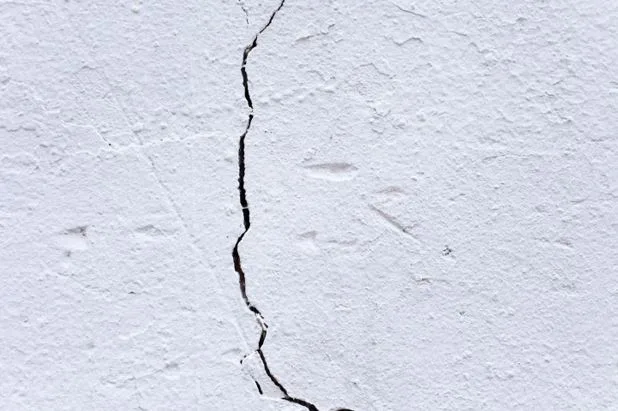Settlement Signs You’ll See (and Many Won’t) Before Major Damage Hits
Homes naturally move with the ground, but when that movement becomes uneven, subtle signs begin to appear long before cracks form in your walls. Recognizing these settlement clues early helps homeowners avoid costly structural damage that compounds over time. The tricky part is that not all indicators are visible or obvious, many happen quietly beneath the surface where you can’t see them.
Understanding what to look for transforms you from someone who reacts to problems into someone who catches them early. Small shifts in floor elevation, slight gaps in trim, or doors hanging differently than they used to all point to foundation movement. These aren’t cosmetic issues to ignore, they’re your home sending signals that something needs attention.
Learning to spot settlement indicators before they escalate means calling professionals for foundation repair in Burlington at exactly the right moment, not after years of unchecked movement.
Most homeowners miss these early warnings until damage becomes obvious and expensive. This article explores both the obvious and hidden signs that your home’s foundation is shifting, and what to do before the damage spreads.
Visible Changes That Shouldn’t Be Ignored
Diagonal wall cracks are one of the most telling signs of foundation settlement, especially when they appear in corners or follow staircase patterns up your walls. These cracks form because as the foundation settles unevenly, different sections of the house move at different rates, creating stress that shows up in the structure above. Sloping floors are another classic indicator, and you can usually feel them more than see them, especially if you roll a marble across the room or notice furniture shifting.
Gaps where ceilings meet walls at corners indicate rotation in the structure, which means one section of your home is dropping faster than another. If you notice that a gap is getting wider over months or years, that’s active settlement happening right now. Bowing or leaning exterior walls are more serious and suggest significant foundation pressure. These visible symptoms often reveal deeper soil instability below the structure that’s been developing for months or even years before the damage becomes obvious.
Sticking doors and windows are easy to dismiss as just an old house quirk, but they’re actually evidence of frame distortion caused by uneven settling. When a door suddenly needs force to close or won’t latch properly, it’s telling you the frame is no longer square. New cracks in ceilings or walls, especially if they weren’t there a few months ago, deserve attention. These visible changes are your foundation communicating that support is shifting, and each one is worth taking seriously.
The Invisible Warning Signs Beneath the Surface
Uneven moisture levels in your basement or crawl space can indicate subtle shifts in support and drainage patterns. One corner might stay damp while others stay dry, which suggests the foundation is settling unevenly and creating low spots where water collects. Door misalignment is another quiet indicator, not the dramatic sticking kind but subtle shifts in how the door frame sits relative to the wall. New draft patterns in your home, especially around baseboards or in corners, often mean small cracks are opening up where settling is happening.
Changes in how your HVAC system performs can actually signal foundation movement too. If one room suddenly feels colder or warmer than before, it might be because settling is creating pressure on ductwork or changing airflow. Musty smells that develop gradually over months, separate from any visible water damage, sometimes indicate that settling is creating cracks where dampness is being drawn in. These invisible warning signs are harder to spot because they don’t announce themselves dramatically, but they’re real evidence of movement.
Monitoring these patterns over time is more valuable than any single indicator. If you notice that moisture is getting worse in one area over three months, or that a slight draft is becoming more noticeable, these trends matter. Document what you observe, take photos if visible signs are present, and note dates of changes. These invisible signs combined with visible ones paint a complete picture of what’s happening beneath your home, and that information is exactly what professionals need to diagnose the problem accurately.
Acting Early to Prevent Escalation
Once foundation movement begins, every heavy rain or drought cycle accelerates the process because those weather events change soil pressure and moisture content. A foundation that’s settling creates stress on surrounding soil, and that stress gets worse with seasonal swings. What takes five years to cause visible damage in year one might take only one year to cause similar damage once the movement has started. This is why catching settlement early prevents exponential costs.
Professional inspection and drainage correction stop problems before they reach the point of major repair. A contractor can assess whether you’re looking at minor settling that needs monitoring or active movement that requires stabilization. Correcting grading around your home, installing proper drainage systems, and sometimes adding interior or exterior drainage solutions can prevent soil from shifting further. These preventative steps are vastly cheaper than foundation underpinning or piering systems, which are what you need if settling has already caused major damage.
Acting when you first notice signs means you’re making decisions from a position of control, not panic. You’re not reacting to a crisis, you’re preventing one. Early intervention keeps your foundation stable, protects your home’s structural integrity, and preserves the value of your property. The cost of a professional evaluation is negligible compared to what you’ll spend if settlement goes unchecked for years.
Conclusion
Most homeowners notice significant damage only after it’s been happening for far too long. By that point, the costs have compounded and the repair work becomes much more invasive and expensive. Paying attention to small shifts, subtle changes, and early warning signs puts you ahead of the game. Scheduling timely foundation repair in Burlington when issues are minor and manageable means you keep control of the situation and your budget.
Small shifts today become big problems tomorrow if left alone, but they become simple solutions if you act early. The homeowners who sleep best at night are the ones who caught their foundation issues when they were still fixable with straightforward intervention. You don’t need to panic over every crack, but you do need to pay attention and respond when patterns emerge.
Your home’s foundation is literally what everything else sits on, so it deserves your attention. Early detection and professional assessment are the keys to keeping your foundation solid and your wallet intact for years to come.






